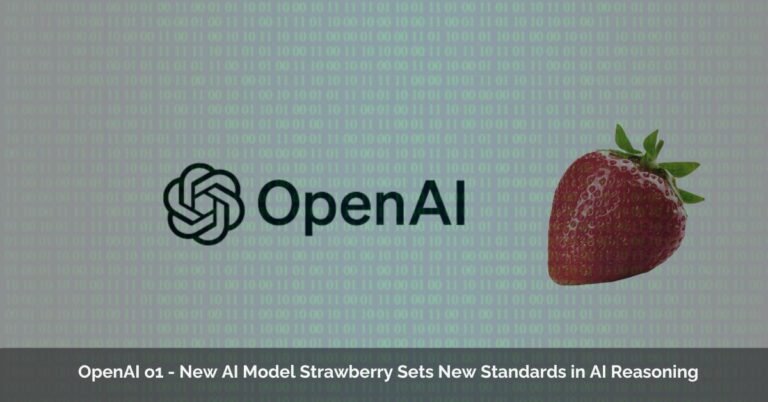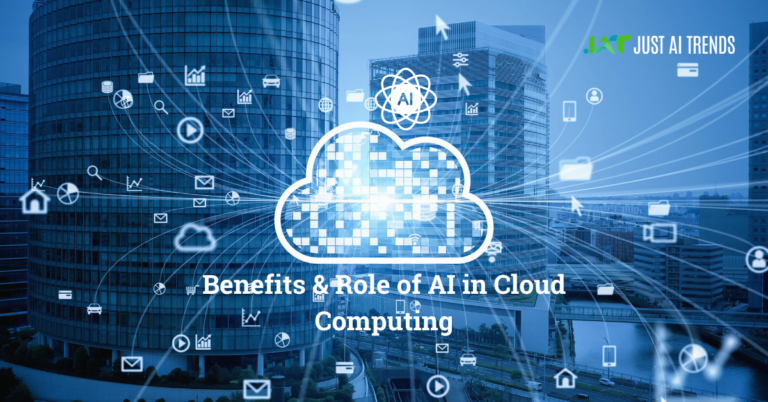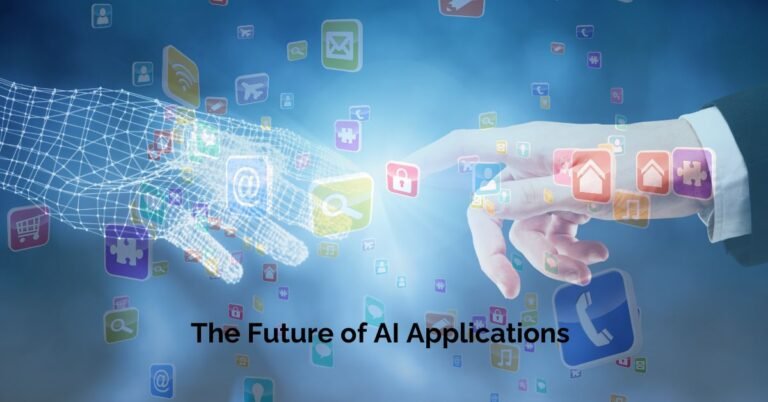Written by: Ameerah
In today’s competitive landscape, businesses need to find ways to stand out from the crowd and provide their customers with a personalized experience. Recommendation engines are a powerful tool that can help businesses achieve this goal by suggesting products, services, or content that are likely to be of interest to individual customers.
What are Recommendation Engines?
Recommendation engines are software algorithms that use data about a user’s past behavior and preferences to predict what they might be interested in in the future. This data can include things like purchase history, browsing behavior, and engagement with marketing campaigns. By analyzing this data, recommendation engines can identify patterns and trends that can be used to generate personalized recommendations.

Dive into the World of Recommendation Engines: Exploring Different Types
Recommendation engines power personalized experiences across platforms, suggesting products, content, and services tailored to individual preferences. But this diverse world holds various types, each with its own approach and strengths. Let’s delve into the major categories:
1. Collaborative Filtering:
Imagine a community of movie buffs. Some love action, others adore comedies. This engine analyzes user behavior (ratings, purchases, etc.), identifies similar users (movie preferences), and recommends items others in their group enjoyed.
- Types:
- User-based: Recommends items liked by similar users.
- Item-based: Recommends similar items to those a user has liked.
- Best for: Large user bases with rich interaction data.
- Limitations: Cold start problem for new users/items, relies heavily on existing behavior.
2. Content-based Filtering:
Think of a website analyzing article topics you read. This engine focuses on item attributes (text, genre, features) and recommends similar ones.
- Features: Analyzes item descriptions, images, tags, metadata.
- Best for: Items with well-defined attributes, new items without user interactions.
- Limitations: May struggle with complex items or subjective preferences.
3. Hybrid Recommendation Engines:
Combining the strengths of both worlds, these engines leverage both user behavior and item attributes for richer recommendations. Think of a platform suggesting music similar to what you listen to, considering other users’ preferences for those artists.
- Methods: Combine collaborative filtering with content-based, often using machine learning.
- Best for: Overcoming limitations of individual approaches, and handling diverse data.
- Limitations: Requires expertise in combining methods, potentially complex to implement.
4. Knowledge-based Filtering:
Think of a travel site using expert-curated information. This engine uses external knowledge (product descriptions, user reviews) beyond user behavior and item attributes.
- Features: Leverages ontologies, user-generated content, and expert opinions.
- Best for: Specialized domains with rich external knowledge sources.
- Limitations: Requires knowledge base maintenance, and may not capture dynamic user preferences.
5. Context-aware Recommendation Engines:
Imagine an app suggesting restaurants based on your location and time of day. This engine incorporates contextual factors like location, time, user device, and even weather to personalize recommendations.
- Features: Considers real-time context alongside other filtering methods.
- Best for: Highly dynamic situations, mobile apps, and location-based services.
- Limitations: Requires access to contextual data, and potential privacy concerns.
How does Recommendation Engines work?
Recommendation engines work through a fascinating interplay of data, algorithms, and a little bit of magic (okay, mostly statistics and machine learning). Here’s a breakdown of the core steps:
1. Data Collection:
The engine gathers information about users and items. This can include:
- User data: Purchase history, browsing behavior, ratings, demographics, etc.
- Item data: Product features, descriptions, categories, reviews, etc.
- Contextual data: Location, time, device type, weather, etc.
2. Data Analysis and Representation:
The engine preprocesses and analyzes this data to identify patterns and relationships. This can involve:
- Feature engineering: Extracting relevant features from the data.
- User profiling: Building representations of individual users and their preferences.
- Item profiling: Encoding item features in a way suitable for comparison.
3. Algorithm Selection and Training:
The engine chooses and trains an algorithm based on the type of recommendation it wants to make and the available data. Popular algorithms include:
- Collaborative filtering: Finds users with similar tastes to the current user and recommends items they like.
- Content-based filtering: Recommends items similar to those the user has interacted with in the past.
- Hybrid approaches: Combine both collaborative and content-based methods.
- Knowledge-based filtering: Uses external knowledge like product descriptions and expert reviews.
- Context-aware filtering: Incorporates real-time context like location and time.
4. Recommendation Generation:
The trained algorithm analyzes user data and item profiles to predict what the user might be interested in. This prediction can be:
- A ranked list of items: Sorted by their predicted relevance to the user.
- A personalized message: Suggesting specific items based on the user’s context.
5. Evaluation and Refinement:
The engine tracks how users interact with the recommendations and uses that feedback to refine its predictions over time. This involves:
- Metrics like click-through rate and conversion rate: Measuring the effectiveness of recommendations.
- A/B testing: Comparing different algorithms and recommendation strategies.
Remember: This is a simplified overview. The actual workings of recommendation engines can be quite complex, involving advanced machine-learning techniques and sophisticated data pipelines. But hopefully, this gives you a good understanding of the core principles!
Benefits of Using Recommendation Engines:
Recommendation engines have become a staple in today’s digital landscape, offering a plethora of benefits that can unlock significant value for businesses and users alike. Here’s a breakdown of some key advantages:
- Increased Revenue and Conversions:
By suggesting relevant products, services, or content, recommendation engines can nudge users towards making purchases or taking desired actions. This can lead to:
- Higher click-through rates: Users are more likely to engage with relevant recommendations, increasing traffic to product pages or desired content.
- Improved conversion rates: Personalized suggestions directly address user needs and preferences, making them more likely to convert.
- Increased average order value: Recommendations for complementary products can encourage users to add more items to their cart.
- Enhanced Customer Satisfaction and Loyalty:
Personalized recommendations demonstrate an understanding of individual preferences, creating a more satisfying and engaging experience. This can translate to:
- Reduced customer churn: Happy customers are more likely to stick around, boosting customer lifetime value.
- Improved brand perception: Personalized interactions cultivate positive brand associations.
- Increased customer engagement: Relevant recommendations keep users actively interacting with your platform.
- Efficient Resource Allocation and Data-Driven Decisions:
Recommendation engines analyze vast amounts of user data, providing valuable insights that can inform business decisions. This can lead to:
- Optimized marketing campaigns: Personalized recommendations target specific user segments, maximizing campaign effectiveness.
- Improved product development: Insights into user preferences can guide product development and innovation.
- Dynamic inventory management: Recommendations based on demand trends can help optimize inventory levels.
- Content Discovery and Exploration:
In information-rich environments, recommendation engines help users navigate vast content libraries. This can lead to:
- Increased content consumption: Users are more likely to discover and engage with relevant content.
- Improved user experience: Easier navigation and efficient discovery lead to a smoother user journey.
- Personalized learning and growth: Recommendations can expose users to new topics and ideas, enriching their experience.
- Competitive Advantage and Market Differentiation:
By leveraging user data and personalization, recommendation engines can create a unique and engaging user experience, setting your business apart from competitors. This can lead to:
- Stronger brand differentiation: Personalized experiences create a loyal user base.
- Enhanced market share: Attracting and retaining new customers through effective personalization.
- Improved brand advocacy: Satisfied users become vocal advocates, promoting your brand organically.
The specific benefits of using recommendation engines will vary depending on your industry, target audience, and business goals. However, the core advantages outlined above highlight the significant potential this technology holds for enhancing user experience, driving business growth, and staying ahead in the competitive digital landscape.
Limitations and Challenges faced by Recommendation Engines:
Despite their remarkable advantages, recommendation engines aren’t perfect and face several limitations and challenges:
1. Data-driven Bias:
- Algorithms can perpetuate existing biases present in the data they’re trained on, leading to unfair recommendations. For example, biased data could lead to discriminatory outcomes based on gender, race, or other factors.
- Filter bubbles: By recommending similar items users have interacted with, they can reinforce existing preferences and limit exposure to diverse content or products, creating “echo chambers” that hinder exploration.
2. Cold Start Problem:
- New users and items with limited interaction history lack sufficient data for accurate recommendations, leading to suboptimal suggestions.
- Overcoming this requires incorporating additional information like demographics, content attributes, or external knowledge bases.
3. Explainability and Transparency:
- Complex algorithms can make it difficult for users to understand why specific recommendations are made, leading to a lack of trust and potential dissatisfaction.
- Addressing this requires developing models that can explain their reasoning and providing users with transparency about how recommendations are generated.
4. Privacy Concerns:
- Collecting and using user data for personalization raises privacy concerns, requiring careful data governance and ethical practices to ensure user trust.
- Transparency about data collection and usage, along with providing users control over their data, is crucial.
5. Resource and Technical Expertise:
- Implementing and maintaining sophisticated recommendation engines can require significant technical expertise and computational resources, which may not be accessible to all businesses.
- Open-source solutions and cloud-based platforms can reduce barriers to entry, but expertise is still needed for effective deployment and customization.
6. Contextual Dependence:
- Recommendations can become outdated if they fail to adapt to changing user preferences, trends, or real-time context.
- Incorporating dynamic contextual factors like location, time, and user intent requires ongoing effort and infrastructure.
7. Evaluation and Refinement:
- Evaluating the effectiveness of recommendation engines can be complex, requiring careful consideration of metrics beyond simple click-through rates.
- A/B testing and ongoing monitoring are crucial for continuous improvement and ensuring recommendations remain relevant and impactful.
Overcoming these challenges requires:
- Careful data selection and pre-processing to mitigate bias.
- Utilizing hybrid approaches and external knowledge sources for new users/items.
- Developing explainable AI models and providing user transparency.
- Implementing ethical data practices and respecting user privacy.
- Investing in expertise or leveraging accessible platforms.
- Employing dynamic models and real-time context awareness.
- Continuously evaluating and refining recommendations based on user feedback and changing trends.
By addressing these limitations and leveraging the power of advanced algorithms and responsible data practices, recommendation engines can unlock their full potential to personalize user experiences, drive business growth, and foster trust in the digital age.
Popular Recommendation Engines: Tailoring Experiences, Boosting Business
Recommendation engines (REs) have become indispensable tools for personalizing user experiences and driving successful businesses across diverse industries. By analyzing user data and item attributes, REs suggest relevant products, services, or content, fostering engagement and increasing conversion rates. Here are some prominent RE players, each offering unique strengths and catering to specific needs:
For E-commerce Platforms:
- Amazon Personalize: A machine learning-based powerhouse from Amazon Web Services, offering robust capabilities for product recommendations, personalized search results, and more.
- Shopify Product Recommendations: Built-in and convenient for Shopify store owners, utilizing purchase history and browsing behavior for personalized product suggestions.
- Nosto: Known for its AI-powered personalization and dynamic product bundles, ideal for driving high-value purchases and upselling strategies.
- Qubit: Employs sophisticated AI and real-time data analysis to create personalized experiences across channels, including email, web, and app.
For Content and Media Platforms:
- Netflix: A household name renowned for its advanced recommendation engine, leveraging collaborative filtering and machine learning to suggest movies and shows tailored to individual viewing preferences.
- Spotify: Personalizes music recommendations and podcast suggestions based on listening history, genre preferences, and curated playlists.
- Pinterest: Utilizes visual discovery and AI to recommend new content based on user interests and engagement with pins and boards.
- Movable Ink: Focuses on personalized email content, leveraging user data and predictive analytics to create engaging and relevant email campaigns.
For Marketers and Businesses:
- Bluecore: A marketing platform with AI-powered personalization features for email, web, and mobile, enabling targeted campaigns and cross-channel recommendations.
- RetailNext: Offers AI-powered customer behavior analytics and personalization for retail, providing insights into shopper journeys and suggesting relevant products for improved in-store and online experiences.
- Adoric: Specifically designed for sales conversions, Adoric’s RE utilizes multi-channel recommendations and dynamic personalization to maximize conversion rates.
Additionally:
- Open-source options: Explore freely available RE frameworks like Apache Mahout or Lenskit for customizability and cost-effectiveness.
- Cloud-based solutions: Consider platforms like Azure Cognitive Services or Google Cloud AI Platform for easier implementation and scalability.
- Hybrid approaches: Combining different RE methods (collaborative filtering, content-based) can leverage the strengths of each for more comprehensive recommendations.
By understanding the capabilities and limitations of popular REs, you can harness their power to personalize user experiences, boost conversions, and unlock significant value for your business.
Choosing the right Recommendation Engine:
Selecting the right recommendation engine for your business requires careful consideration, as there’s no “one-size-fits-all” solution. Here’s a roadmap to guide your decision-making process:
- Define Your Needs and Goals:
- What type of recommendations do you want to offer? (Product, content, service)
- What are your business goals? (Increase sales, improve engagement, personalize user experience)
- Who is your target audience? (Demographics, interests, behavior)
- What data do you have available? (User data, item data, contextual data)
- What are your budget and technical resources?
- Evaluate Different Engine Types:
- Collaborative filtering: Best for large user bases with rich interaction data, but susceptible to cold start problems.
- Content-based filtering: Good for new items or niche domains with well-defined attributes, but may struggle with complex items or subjective preferences.
- Hybrid engines: Combine strengths of both approaches, offering more flexibility but requiring more data and expertise.
- Knowledge-based filtering: Useful for specialized domains with rich external knowledge, but requires knowledge base maintenance.
- Context-aware engines: Ideal for mobile apps or location-based services, but require access to contextual data and consider privacy concerns.
- Research and Compare Available Options:
- Consider industry leaders and niche providers.
- Evaluate features, pricing, scalability, and ease of integration.
- Read reviews, case studies, and user testimonials.
- Request demos or trials to test different engines.
- Prioritize Key Features:
- Accuracy and relevance of recommendations.
- Explainability and transparency.
- Personalization capabilities.
- Real-time adaptation and dynamic updates.
- Scalability and ability to handle large data volumes.
- Integrations with existing systems.
- Data security and privacy compliance.
- Consider Additional Factors:
- Data privacy regulations and ethical practices.
- Ongoing support and maintenance.
- Vendor reputation and track record.
- Ability to adapt and evolve with your needs.
Choosing the right recommendation engine is an iterative process. Don’t be afraid to experiment, gather user feedback, and refine your approach over time. By following these steps and carefully evaluating your options, you can find a solution that empowers your business to deliver impactful, personalized experiences to your users.
Additional Tips:
- Start small and scale your implementation as you gain experience and confidence.
- Set clear performance metrics to track the effectiveness of your chosen engine.
- Encourage user feedback to continuously improve recommendations and user experience.
- Stay informed about advancements in recommendation engine technology and adapt accordingly.
Final Wordings:
The world of recommendation engines is vast and ever-evolving, offering businesses a powerful tool to personalize user experiences and drive growth. By understanding the different types, their strengths and limitations, and carefully selecting the right fit for your unique needs, you can unlock the potential for:
- Increased revenue and conversions
- Enhanced customer satisfaction and loyalty
- Efficient resource allocation and data-driven decisions
- Content discovery and exploration
- Competitive advantage and market differentiation
The key lies in leveraging the technology responsibly, addressing challenges like bias and privacy, and continuously refining your approach to meet your evolving needs and user expectations. With the right strategy and implementation, recommendation engines can become a cornerstone of your personalized user experience journey, fueling customer engagement and business success.
FAQs:
- What data do I need to use a recommendation engine?
The specific data requirements depend on the type of engine chosen. Generally, user data (purchase history, browsing behavior), item data (features, descriptions), and potentially contextual data (location, time) are used.
- How much does a recommendation engine cost?
Costs vary widely depending on features, scalability, and vendor. Open-source solutions exist, but most require a subscription fee. Research and compare options based on your budget.
- Are recommendation engines ethical?
Ethical concerns like bias and privacy are crucial. Choose vendors with responsible data practices, ensure user transparency, and comply with data privacy regulations.
- How do I measure the success of a recommendation engine?
Track relevant metrics like click-through rates, conversion rates, user engagement, and customer satisfaction. Regularly evaluate and refine your approach based on data and user feedback.
- How can I personalize recommendations beyond product suggestions?
Consider recommending content, services, or experiences based on user interests, context, and preferences. Experiment with different recommendation strategies to optimize for your specific goals.

























